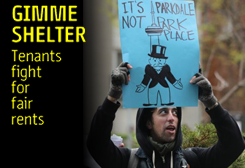STIFFED AGAIN
Provinces refuse to tap into federal money for wage top-ups

ICU nurse Aimee Goold selfie at the end of a 13-hour shift
THE MONEY IS STILL SITTING IN OTTAWA. Hundreds of millions of dollars in wage top-ups that six of our ten provinces refuse to pay out to thousands upon thousands low-wage, essential, frontline workers.
Ottawa provided $3 billion to top-up the wages of low-wage essential workers in May 2020. The catch is that in order to get the federal funds the provinces have to contribute 25%. Only Quebec, Ontario, Newfoundland and Labrador and Prince Edward Island were ready to do that. The six other provinces prefer to leave a lot of the federal money on the table. None more than Alberta.
Alberta tops list of worst
Alberta has left $335.8 million on the table—close to 90% of what they could access for Alberta workers.
“Alberta is an outlier, a gross outlier, in regards to doing what’s necessary to make sure that these low-paid, frontline workers get the so-called hero pay that they’ve been promised,” says Alberta Federation of Labour (AFL) president Gill McGowan.
Kenney and his well-paid ministers—several of whom fled Canada for a Christmas holiday in the sun, while frontline workers struggled to control a dramatic surge in new cases—obviously don’t want to provide a single cent more in support for workers from the provincial budget.
“Alberta’s essential workers are missing out because of UCP (United Conservative Party) negligence and foot dragging,” says McGowan.
“It’s a disgrace for Alberta to be here,” stated Rory Gill, president of the Alberta division of the Canadian Union of Public Employees. “These are people who care for the most vulnerable in our society—the elderly and the infirm. And they’ve been ignored.”
Unifor’s Jerry Dias agrees: “From education workers to front line health care staff, to the Albertans who rely on them, few workers have escaped Kenney’s heartless cuts and attacks on basic workplace rights.”
Low wage epidemic
Low wages are a contributing factor in the spread of the virus. Workers paid low wages are likely to be workers who can’t afford to take time off—even if they feel unwell. Any lost pay will make their struggle to make ends meet almost impossible. This reality forces them to show up to work regardless, perhaps even ignore covid symptoms, which can only increase the possibility that they might spread COVID-19 to others.
In Alberta, close to 300,000 people, one in eight workers, earn no more than the minimum wage.
The Kenney government has refused to raise the minimum wage. That means the already inadequate $15 per hour minimum wage has declined in real terms. The Parkland Institute estimates that the current minimum wage would need to be increased to $17 pr hour to make it a living wage.
Cuts make things worse
On top of low wages, many health care workers have been left to fight the virus with inadequate equipment and protection. Three health care workers have died in the province since the beginning of the year: Joe Corral, a 61-year-old health care aid at a long-term care facility; a health worker in her 50s who was not identified; and a Calgary-based physician in his 70s.
Instead of offering support to overworked and under-resourced health care workers who are risking their lives, the Alberta government has been laying them off. It announced last October that up to 11,000 Alberta Health Services jobs will be eliminated and replaced by private contractors with much worse pay and working conditions.
In response, health care workers took strike action at facilities across the province in November.
Thara Kumar and Kavya Anchuri, members of the advocacy group Canadian Doctors for Medicare, insist that the scale of Kenney’s attacks means protests will continue.
- 30 -













Add new comment